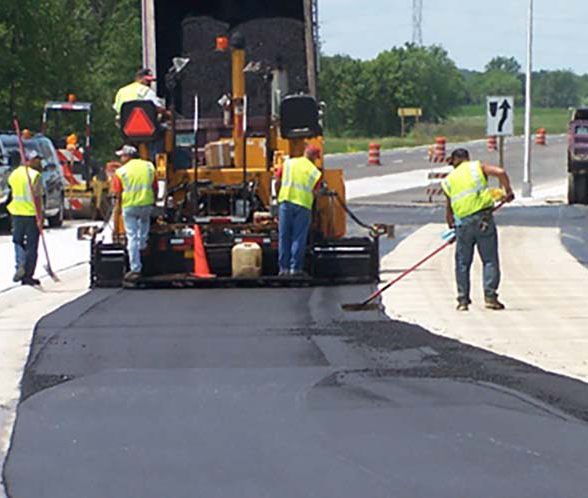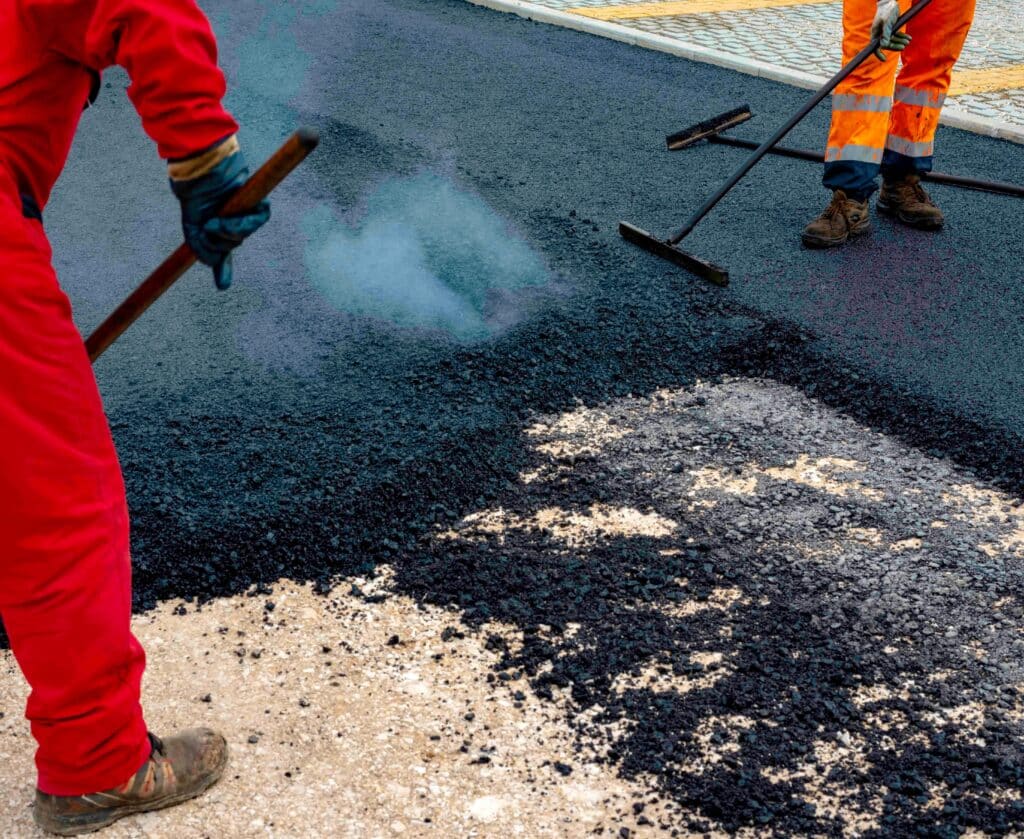Hot Mix Asphalt: The Structure for Safe and Secure Angled Parking Lots
Hot Mix Asphalt: The Structure for Safe and Secure Angled Parking Lots
Blog Article
Opening the Secrets of Hot Mix Asphalt Technology
Exploring the depths of hot mix asphalt modern technology uncovers a globe where exact formulas and thorough procedures merge to shape our roads and framework. The combination of binders, fillers, and aggregates isn't merely a building and construction job but a critical orchestration of resilience and efficiency.
Relevance of Hot Mix Asphalt
Warm Mix Asphalt plays an important function in modern facilities growth due to its toughness and cost-effectiveness. As the most typically utilized paving product for roadways, freeways, and car park whole lots, Warm Mix Asphalt offers a range of advantages that contribute to its value in building and construction projects.
The longevity of Warm Mix Asphalt stems from its structure, which includes aggregates, binder, and filler materials that are meticulously selected and blended to meet details efficiency requirements. Generally, the significance of Warm Mix Asphalt in framework growth can not be downplayed, as it proceeds to be a keystone of modern construction practices.
Parts of Asphalt Mixes
The make-up of asphalt mixes consists of carefully selected accumulations, binder, and filler materials that are important for attaining specific performance demands. Accumulations are the main element of asphalt blends, providing strength and security. The binder, typically bitumen or asphalt cement, holds the aggregates together and supplies versatility and resilience to the mix.
The mix and percentage of these parts play a considerable role in determining the quality and efficiency of the asphalt mix. Engineers meticulously create the mix to satisfy certain demands, considering elements like web traffic quantity, environment conditions, and sidewalk life-span. Correct choice and balancing of accumulations, binder, and fillers are crucial for developing sturdy, resilient asphalt sidewalks.
Combining and Production Strategies

Once the aggregates are selected, the binder, commonly asphalt cement, is included in bind the materials with each other. The binder's quality and quantity substantially impact the mix's adaptability, resistance, and strength to ecological factors. In addition, fillers like hydrated lime or Rose city cement may be integrated to enhance details attributes of the asphalt mix, such as its workability or wetness resistance.
During manufacturing, the accumulations and binder are warmed, commonly between 250-325 ° F(121-163 ° C ), to assist in blending and guarantee proper finish of the accumulations. The mixing procedure needs to be extensive to achieve an uniform mix that advertises the desired performance characteristics of the asphalt. Various techniques, such as set blending or drum blending, are employed to accomplish consistent and high-grade asphalt mixes for building and construction projects.
Factors Influencing Asphalt Performance
Variables affecting asphalt performance incorporate a series of variables that affect the sturdiness, durability, and general high quality of asphalt pavements. One vital element is the top quality of products utilized in the asphalt mix. The type and source of aggregates, the binder quality, and the additives all play a considerable function in identifying the performance of the asphalt sidewalk. The gradation of aggregates is crucial as it affects the mix's workability, resistance, and security to rutting and splitting.

Style considerations, such as pavement density and water drainage, are important in making sure the lasting performance of the asphalt pavement. By very carefully taking into consideration these engineers, contractors and variables can optimize asphalt efficiency and improve the service life of pavements.
Sustainable Practices in Asphalt Technology

Additionally, the advancement of warm-mix asphalt (WMA) technologies has actually obtained traction in recent times. WMA allows for the manufacturing and placement of asphalt blends at lower temperature levels compared to conventional hot-mix asphalt, resulting in minimized power intake and greenhouse gas discharges. The usage of permeable asphalt blends can assist reduce stormwater overflow issues by permitting water to penetrate via the pavement and into the ground, promoting natural water filtration and charge procedures. By implementing these sustainable techniques, the asphalt sector can add to developing a more ecologically friendly and durable facilities network.
Conclusion
To conclude, hot mix asphalt technology plays a vital function in modern framework growth because of its you can try here longevity and cost-effectiveness. By meticulously balancing elements, utilizing correct blending methods, and thinking about different aspects, designers can produce top notch asphalt mixes that stand up to rush hour lots and severe weather problems. Embracing lasting techniques, such as using recycled products and warm-mix innovations, even more enhances the environmental friendliness of asphalt innovation.
Mixing and manufacturing techniques in hot mix asphalt technology include the exact combination and processing of aggregates, binder, and fillers to develop a resilient and high-performance asphalt mix.Variables affecting asphalt efficiency encompass a range see this website of variables that affect the resilience, long life, and overall high quality of asphalt sidewalks. Sustainable methods in asphalt technology include different initiatives aimed at minimizing the environmental effect of asphalt manufacturing and paving processes. By including redeemed asphalt sidewalk (RAP) and recycled asphalt tiles (RAS) into brand-new asphalt mixes, the market can substantially minimize the usage of raw materials and energy, while also lowering garbage dump waste.
WMA allows for the production and positioning of asphalt mixes at lower temperatures contrasted to typical hot-mix asphalt, resulting in lowered energy usage and greenhouse gas emissions.
Report this page